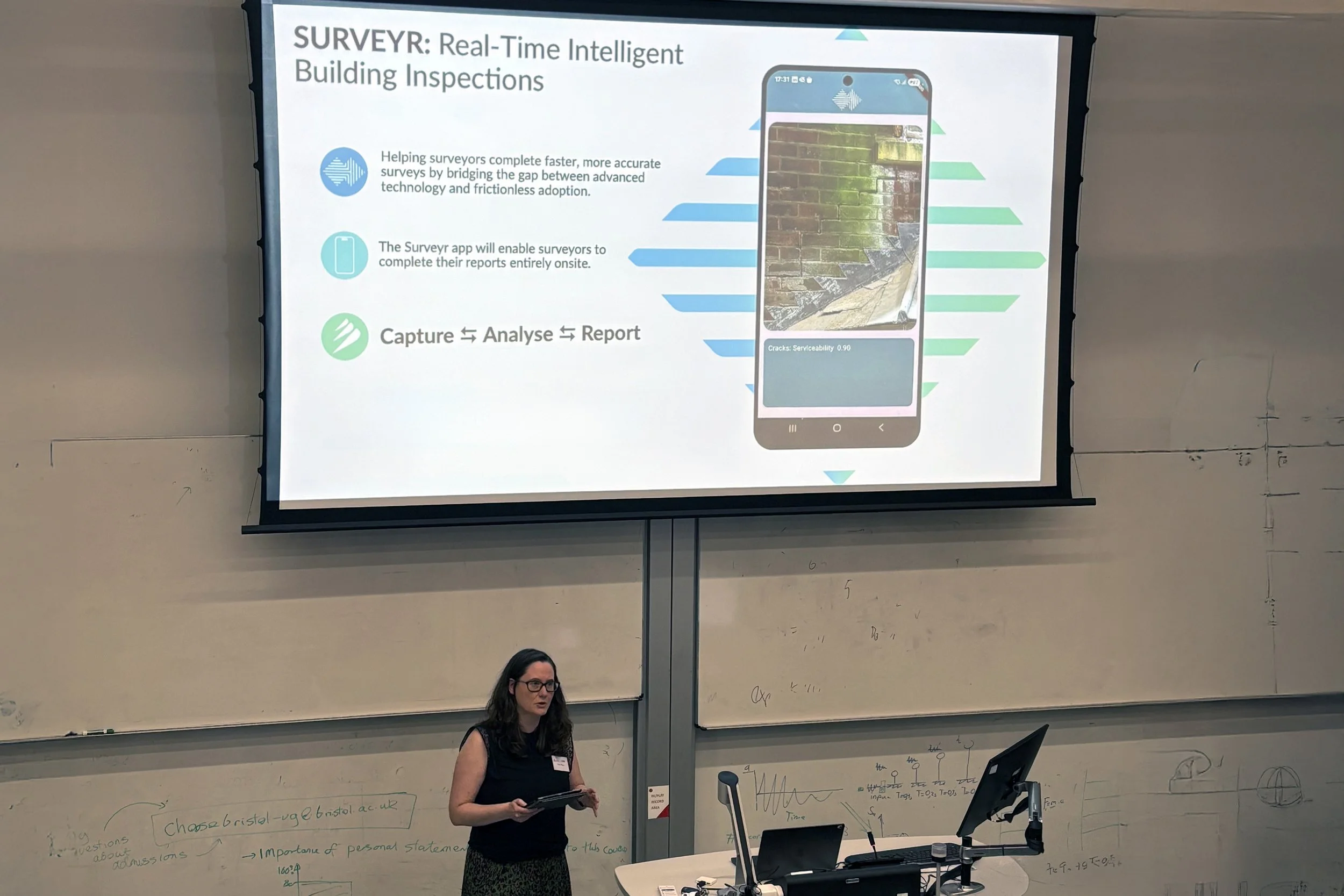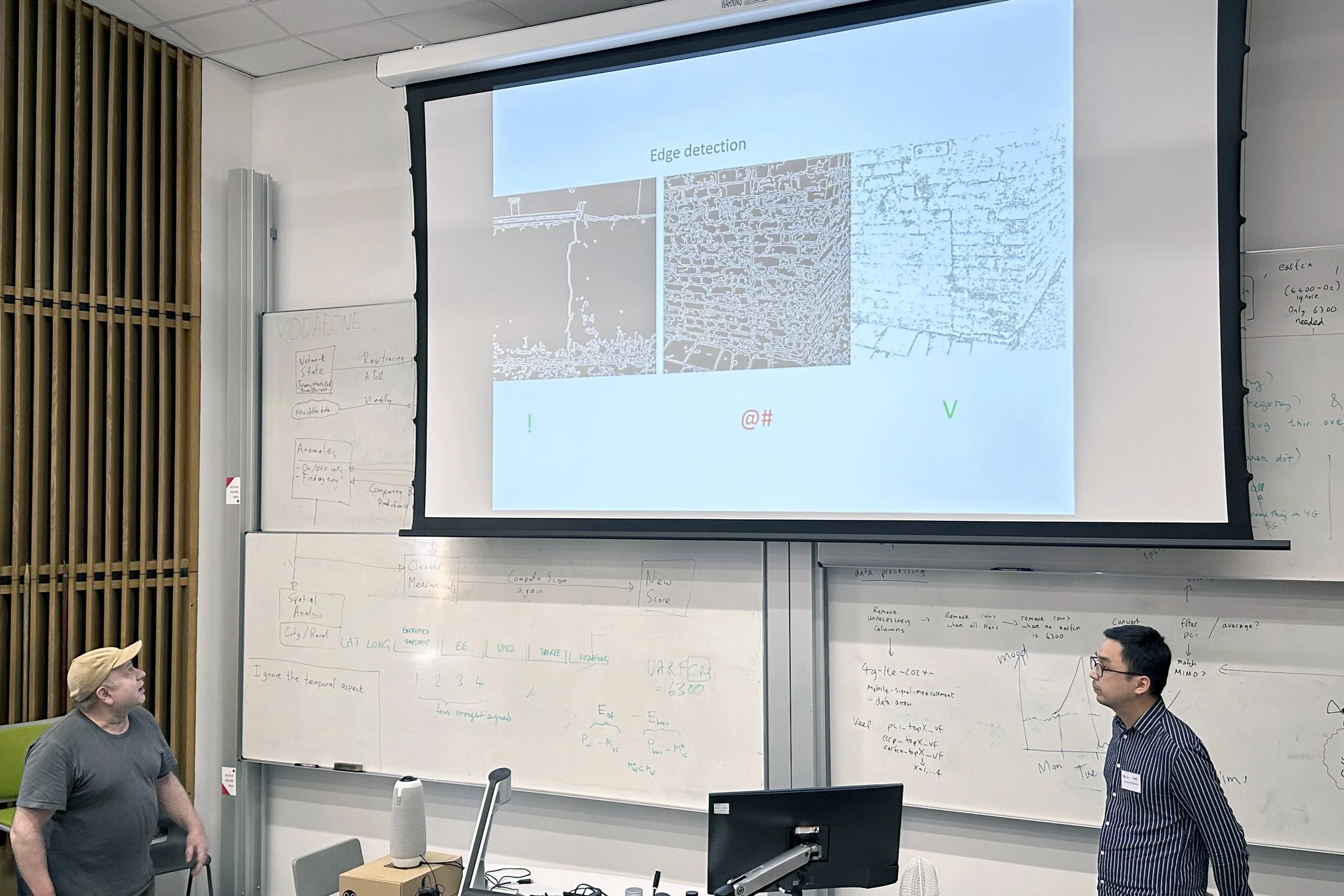ESGI 187 - Advancing Intelligent Building Inspections
This week, Surveyr was proud to participate in the 187th European Study Group with Industry (ESGI), held at the University of Bristol from 14–18 July 2025. ESGI is a renowned five-day workshop that brings together mathematical scientists and industry partners to tackle real-world challenges through collaborative problem-solving and data-driven innovation.
Surveyr presented a real world challenge focused on automatically detecting two of the most common building defects: cracks and moisture. These issues are critical to structural integrity and occupant safety, yet remain time-consuming and subjective to assess manually. Over five days, delegates brought deep thinking, technical experimentation, and cross-disciplinary insight to bear on this multifaceted task. Here’s a recap of the collaboration:
Day 1: Defining the Problem Space
The workshop opened with a dynamic exchange of ideas across eight industry challenges. Surveyr’s brief sparked immediate interest, and the academic team, spanning machine learning experts and computer scientists, divided into focused subgroups for cracks and moisture. Day one was all about immersion: digesting data, referencing standards, and framing the problem. Early discussion highlighted the nuance of detecting defects in varied conditions, particularly the influence of surface complexity like brickwork. Participants began teasing apart potential solution pathways, recognising the importance of consistent image capture and considering the boundaries between traditional image processing and machine learning techniques.
Day 2: Deep Thinking and Data Dialogues
Tuesday saw a shift into focused problem-solving. Delegates debated what ‘precision’ means in the context of classification and began scoping ways to standardise visual data. Key themes included accuracy thresholds, the role of pre-trained models, and how surveyor-captured images might be optimised for downstream processing. The idea of “continual learning” emerged, mirroring real-world surveyor experience, and there was lively discussion around how feedback loops could help refine defect classification over time. Several participants also explored the role of transfer learning and the potential for large language models to assist in downstream tasks.
Day 3: Analysis and Exchange
Midweek marked a pivot to analysis and presentation. Teams shared conceptual architectures for crack and moisture detection, each mapping a multi-step process from preprocessing to classification and outcome generation. Delegates approached the challenge from different angles: edge detection and segementation/ convolutional models, while reflecting on practical constraints such as image quality, real-world variability, and the precision required for actionable recommendations. Surveyr’s Q&A encouraged deeper thinking around validation, field protocols, and how professional surveys interface with algorithmic predictions.
Day 4: Consolidating Directions
Thursday brought synthesis and solution-building. Teams prototyped pipelines, tested augmentation strategies, and debated classification logic. The dialogue broadened to include physics-based reasoning and the role of curated training data. Crucially, discussions remained grounded in real-world relevance: how surveyors capture images, how defect types vary, and how technologies could support, not replace, expert judgment.
Day 5: Final Presentations and Reflections
The final day saw delegates present their proposed solution pathways, confirming that crack and moisture defect detection are both technically feasible and classifiable. Several machine learning models, ranging from convolutional neural networks to segmentation-based pipelines, were discussed as viable options. The consensus highlighted the importance of clean, preprocessed imagery, pre-trained datasets, and robust data augmentation strategies. Accuracy can be continually improved by retraining with additional real-world surveyor data and refining capture protocols. Across both workstreams, the emphasis was on practical, scalable approaches that align with sector standards and field use.
Concluding Thoughts
Surveyr is deeply grateful to the project team for their commitment, creativity, and rigorous thinking throughout the week. The depth of experimentation and discussion has been invaluable, and we’re excited to integrate these insights into Surveyr’s next phase of development. We look forward to continued collaborations as we work toward scalable, intelligent surveying solutions that are both usable and future-ready.



